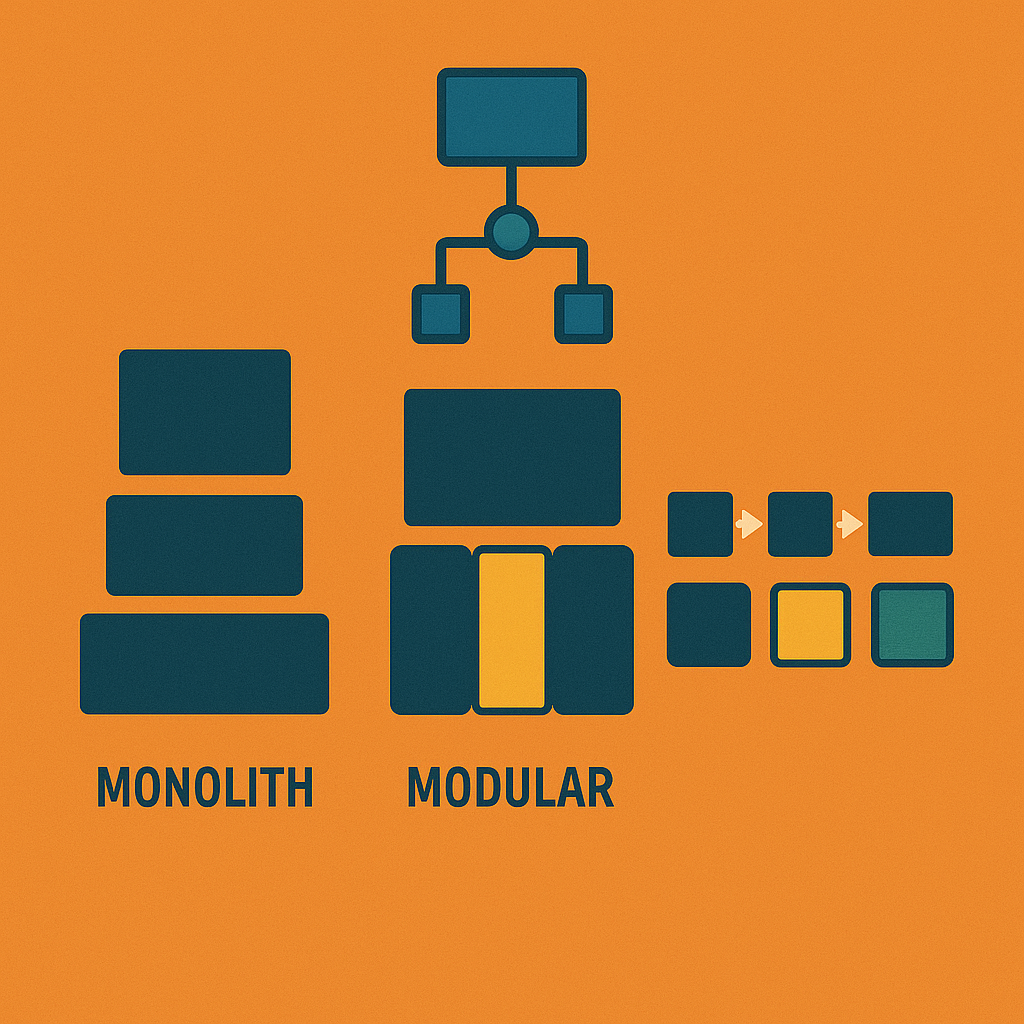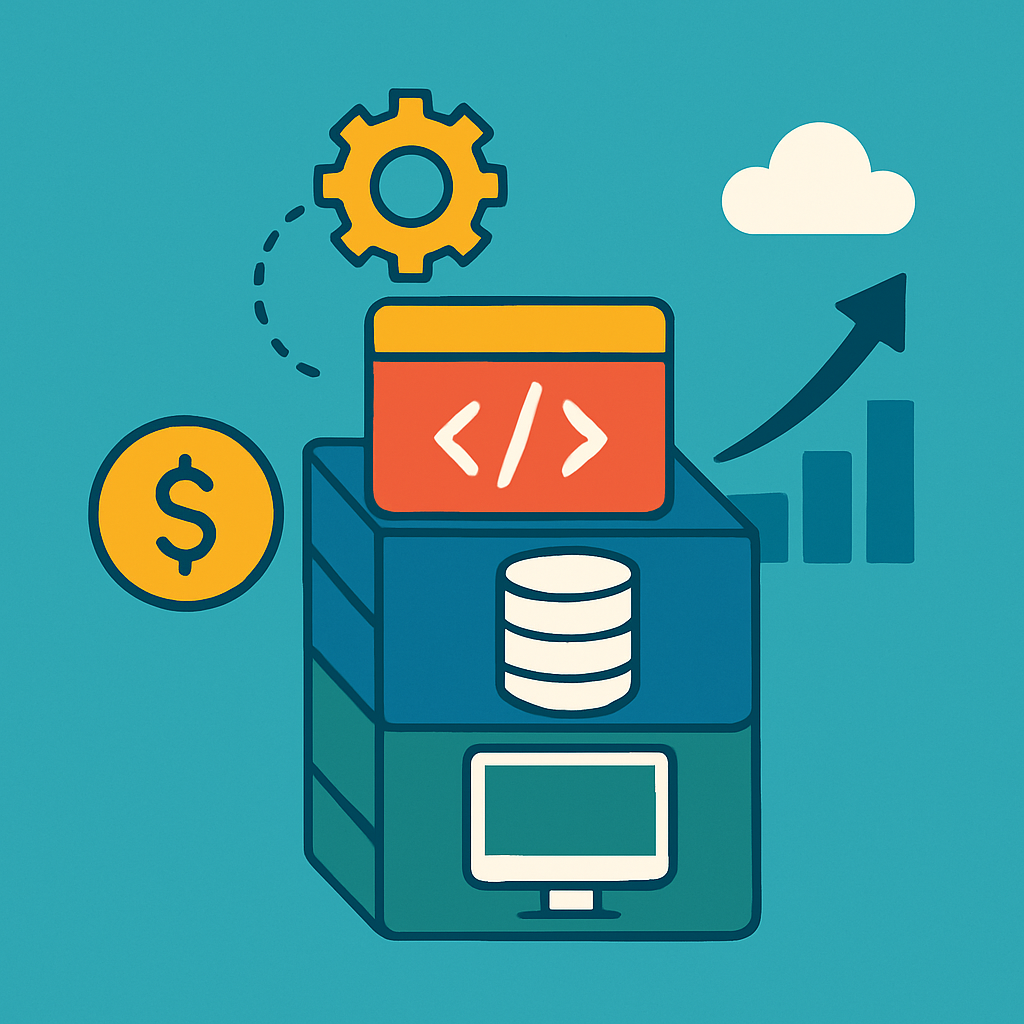Architecture is not simply selecting the proper tools; it’s planning your architecture to manage growth, complexity, and change. You might be building something entirely new or modifying an existing system, but whichever you select—monolithic, modular, or microservices—your BI platform’s flexibility, speed, and sustainability will be defined.
Monolithic BI Systems
What It Is
A monolithic BI system is one, cohesive application where every component—data ingestion, processing, storage, and reporting—is strongly coupled and executed as a single unit. Consider it a single, large codebase that performs all the functionalities.
Pros
Simplicity: All in one location, easy to develop, test, and deploy.
Performance: No overhead of inter-service communication; components execute within the same process.
Easier Debugging: With a single codebase, issues can be traced more straightforwardly.
Cons
Scalability Issues: Scaling means copying the whole application, which is inefficient.
Tight Coupling: Modifying one aspect of the system can have an impact on others, so updates are riskier.
Technology Lock-In: Implementing new technologies can involve extensive refactoring.
When to Use
Small and medium-sized organizations with simple BI requirements.
Teams that want simplicity and don’t have a lot of resources for complicated infrastructure.
Modular BI Systems
What It Is
A modular BI system structures the application into separate, independent modules in one codebase. Each module performs a particular function, such as ingestion of data or reporting, but they use the same runtime environment.
Advantages
Enhanced Maintainability: Modules are built and maintained separately to avoid affecting the entire system.
Scalability within Constraints: Though still in one application, modules can be scaled separately to a limited degree.
Future-Proofing: Modules can be broken down to microservices as time goes on if necessary.
Cons
Shared Resources: Modules tend to use the same database, which can cause contention at high loads.
Limited Isolation: Problems in one module can affect the overall system.
Complexity in Management: Handling module dependencies may become tricky as the system expands.
When to Use
Organizations that want to enhance maintainability without necessarily adopting microservices.
Teams that foresee future expansion and desire a way to more modular designs.
Microservices-Based BI Systems
What It Is
A microservices-based BI system breaks down the application into tiny, individually deployable services, each serving a particular business capability. The services interact over a network and can be separately developed, deployed, and scaled.
Advantages
Independent Scaling: Every service can be scaled according to its own particular load, conserving resource usage.
Fault Isolation: One service failure is not necessarily a failure of others, enhancing system robustness.
Flexibility in Technology: Various services may employ various technologies that are most appropriate for their needs.
Cons
More Complexity: Handling multiple services brings complexity in orchestration, monitoring, and communication between services.
Network Overhead: Inter-process communication between services over a network may incur latency.
Data Management Complexity: Data consistency across services can be difficult to manage.
When to Use
Large enterprises with sophisticated BI requirements and resources to deal with distributed systems.
Groups that need high availability and independent scaling of components.
Selecting the Appropriate Architecture
Whether to use monolithic, modular, or microservices architecture relies on a variety of elements:
Size and Complexity of the Enterprise: Larger enterprises with sophisticated requirements can leverage microservices, whereas smaller enterprises may find it easier with a monolithic approach.
Resources and Expertise: Microservices demand more infrastructure and more expertise to handle them successfully.
Growth Projections: If the expected growth is fast, beginning with a modular style can offer a balance between simplicity and scalability.
Conclusion
Scaling a BI system isn’t about opting for the newest fad; it’s about adopting an architecture that suits your organization’s immediate needs and long-term objectives. Whether you begin with a monolith, a modular strategy, or microservices, the point is to be able to stay flexible and ready to adapt your architecture as your BI needs increase.



